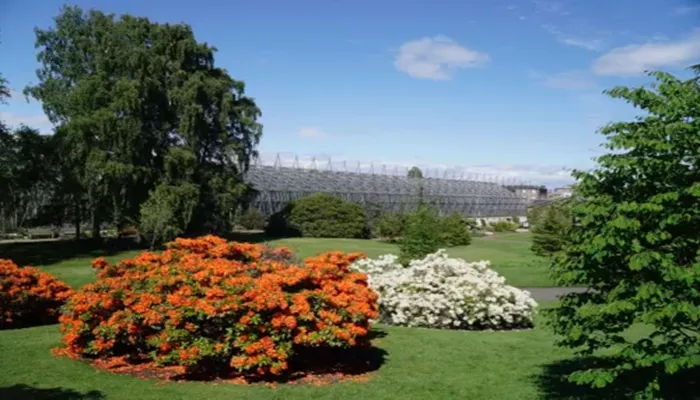Southern California is sweltering under triple-digit temperatures this week, pushing urban greenery to its limits. With concerns rising about whether our primary sources of shade can withstand the heat, experts from UC Riverside shed light on the impact of extreme weather on plants.
Amir Verdi, Associate Professor of Agricultural and Urban Water Management
Q: Why is it important to consider the effects of heat waves on plants?
A: Urban greenery cools the environment in three main ways: by providing shade, reflecting sunlight, and through transpiration, where plants release water vapor through tiny openings called stomata in their leaves. While plants help reduce the urban heat island effect—which makes cities hotter than rural areas—they have a limited capacity to cool the environment. During heat waves, it’s crucial to be cautious as extreme heat can pose significant health risks.
Q: When temperatures hit 105 degrees, what happens to the temperature of plant canopies? Are they as hot as the air?
A: Data shows that when plants are not irrigated or are under prolonged water conservation, their canopy temperatures can exceed air temperatures, especially around solar noon. Transpiration, which cools plants, requires water in their root zone. However, the temperature can vary between plant species. While groundcovers and turfgrass tend to show higher temperatures, trees, which provide shade, are generally cooler due to their cooling effect.
Q: Will our green spaces survive the current heat wave?
A: Generally, if landscape plants receive adequate irrigation, they should endure heat waves.
Darrel Jenerette, Professor of Botany and Plant Sciences and Director of UCR’s Center for Conservation Biology
Q: Can you explain the difference between air and surface temperatures and why it matters?
A: Surface temperature is measured with infrared tools like handheld devices, drones, or satellites and reflects the temperature of materials like rooftops, soil, or leaves. Air temperature is measured 2 meters above the ground. For plants, surface temperature gives a better idea of leaf conditions, affecting photosynthesis and water loss. Understanding surface temperatures helps gauge the overall thermal environment, which is crucial for assessing heat impact on people and plants. Surface temperatures are more variable than air temperatures, and research continues to explore their effects on human health.
Francesca Hopkins, Associate Professor of Climate Change and Sustainability
Q: What happens to plants during extreme heat when they can’t move indoors?
A: Plants eventually shut down under extreme heat, usually around 105 degrees, though this varies by species and acclimatization. At critical temperatures, plants close their stomata to conserve water and halt photosynthesis. This shutdown is an energy-saving measure to prevent dehydration. Under intense heat, evaporation increases rapidly, exacerbating dryness.


